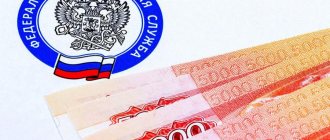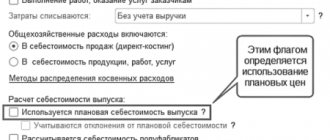What is the FXTB ETF?
FXTB - invests money in short-term US bonds (Treasuries), with maturity in 1-3 months.
The main use of FXTB is as protection against ruble depreciation and (or) as an alternative to a bank dollar deposit.
The two most important factors in favor of buying FXTB:
- Treasuries have no drawdown.
- In history, the ruble always weakens against the dollar.
An investor investing in FXRB ETF receives profit in two directions at once: as coupon income from American bonds and the strengthening of the dollar exchange rate.
What if we start earlier?
Let's consider another example when comrades missed each other in currencies in 1997
(before the severe crisis of 1998). Over 23 years, the amounts of 850 thousand rubles and 1.621 million rubles were received in favor of dollars. In terms of purchasing power, 47 thousand and 89 thousand rubles, respectively, are in favor of dollar storage.
The only conditionally successful period for owning a currency is the last 10 years. The currency crisis of 2014, coupled with low interest rates in large banks, gave the dollar a chance to outperform.
But again, the nuances are in the details. While Sberbank offered 8-10% on deposits in rubles, I would keep deposits for several years at 17% per annum in Credit Europe Bank with the same DIA insurance
– and here the dollar would again give lower returns.
You can also look
of this table
We attach a file with calculations here.
Caution FXTB
But FXTB has one implicit and unpleasant feature (or rather, even several), which many are not even aware of.
Let's look at specific examples.
Weakening of the ruble?
At the beginning of the year we decided to buy FXTB. Due to the weakening of the ruble exchange rate, we receive additional profitability in the form of rising quotes.
ETF FXTB - growth since the beginning of the year
Profitability since the beginning of the year is more than 22%. Great.
What if we just bought dollars? How much would we lag behind FXTB in profitability? Let's see.
Since the beginning of the year, FXTB has grown by 22.67%, the dollar exchange rate by 22.89%. Almost the same profitability.
If you look at the chart, throughout the year FXTB was very slightly ahead. Literally tenths of a percent. But this can probably be neglected.
Expected return?
The FXTB instrument contains an additional premium that is given by Treasuries. The yield of Treasuries directly depends on the US Federal Reserve rate.
And this is where the catch is hidden.
Back in 2018-2019, the expected return on treasuries (and, accordingly, FXTB) was at the level of 2% per annum (in dollars). Now everything is much worse. The expected yield on short US bonds is at the level of tenths of a percent (from 0.1 to 0.3%). Just tears.
But that is not all. Don't forget about additional costs. The fund provider Finex will charge a management fee of 0.2% per year.
As a result, the expected return of FXTB decreases to zero (if not negative). And we get just an analogue of the dollar. Where all profitability is generated only due to the weakening of the ruble.
Paradox . Could the ETF's management fees be greater than the expected return on the instrument?
Especially for clarity, I converted ruble quotes on FXTB into dollar ones. Divided ruble quotes by the dollar exchange rate.
So what do we see? Since the beginning of the year, the dollar yield has even been negative: - minus 0.45%.
To be fair, I note that the current result is a strong deviation from the average. If we take a more successful (average) period, then we would get something in the region of plus 0.2-0.3%.
Taxes?
And the most unpleasant moment is taxes, taxes and taxes again.
ETF FXTB has shown a return of 22.67% since the beginning of the year. This is your profit. From which tax will be withheld - 13%. As a result, the real profit (after tax) will be 19.7%.
It’s unpleasant, of course, but we’re still in the black.
Yes. But let's look at the situation in comparison with dollars.
At the beginning of the year, the dollar exchange rate was 63. Now, at the time of writing, it is 77 rubles.
Let's say at the beginning of the year you had on hand an amount equivalent to $1,000 - 63,000 rubles. You bought FXTB for everything. Trying to protect ruble savings from depreciation.
A year later, the value of your ETF has grown to 78,000. Net profit is 15 thousand rubles.
We minus the tax of 13% (1950 rubles) and we are left with 76,050 rubles.
On the one hand, you are still in the black - a profit of 13 thousand rubles.
But if you convert it back into dollars, then in fact from the original thousand - after paying taxes you will have 975 dollars left (76050 / 78).
Instead of profit, you received a loss!!!
In this case, it would be cheaper and more profitable to buy and hold just dollars.
Payments in foreign currency. How not to make a mistake with the amount of debt
Yuri Sbitnev, partner at Exiora Law Firm
How this article will help: do not lose money due to exchange rate differences
If the parties have established a price in a foreign currency in the contract, you will still have to pay in rubles. The main question is at what rate and on what date to calculate the amount. This determines what currency to indicate the requirements in a claim or lawsuit.
How to determine which rate to pay
If there is a currency clause, there are two ways to calculate the amount in rubles.
According to the official exchange rate on the day of payment. This rule applies by default unless the parties have agreed on a different rate in the agreement. 317 Civil Code In this case, the creditor has a right of claim not in rubles, but in foreign currency at the rate on the date of payment. Therefore, if you are collecting a debt, indicate the requirement in the claim and claim in foreign currency. In the same currency, consider the legal and contractual interest on the amount of the debt, as well as the penalty. VAS70-1, Reason - at the time of sending a claim or filing a lawsuit, it is unclear what the amount in rubles will be, since the day of payment is not yet known. The court will collect the debt in foreign currency and determine the moment at which the exchange rate needs to be calculated.
If the debt is collected from you, check what currency your opponent indicated in the claim. If the claim contains an amount in rubles, and the claim is in foreign currency, ask to leave the claim without consideration. State that the plaintiff did not comply with the claim procedure, 4 APC, since the requirement in the claim does not coincide with the subject of the claim. A40, A40-1, A40-2
At the rate specified in the contract. The parties may establish their own foreign exchange rate or the procedure for determining it. For example, stipulate in the contract that the price for goods in US dollars is calculated in rubles not on the day of payment, but on the day of shipment or invoice. To reduce risks, the parties often stipulate the boundaries of foreign currency conversion. For example, the following condition is included in the contract: “payment is made at the rate of the Central Bank of the Russian Federation on the day of payment, but not less than 45 rubles and not more than 62 rubles per US dollar.” Or the parties provide for the possibility of changing the price depending on future currency exchange rate fluctuations.
In such cases, the amount of the debt can always be determined in rubles, that is, in fact, the currency of the debt coincides with the currency of payment. Therefore, indicate all requirements in rubles. If the counterparty pays less, for example, at a lower official rate, the exchange rate difference can be recovered from him. A45, A79 Penalties for this amount should also be assessed in rubles. A56
| Case study The supplier has the right to recover the exchange rate difference if the buyer paid at a lower rate | The plaintiff (victory) asked to recover an additional payment for the goods. Indicated that the buyer paid late when the exchange rate became lower. Because of this, the plaintiff did not receive 1 million rubles | The defendant objected, pointing out that the contract does not provide for the buyer’s obligation to compensate for exchange rate differences. This is not the supplier's loss |
| The court granted the claim. According to the agreement, the buyer must pay within 30 calendar days after signing the acceptance certificate. The parties agreed to calculate the price in rubles at the euro exchange rate of the Central Bank of the Russian Federation on the day preceding the payment. The defendant paid only two months later, when the euro fell. The plaintiff suffered losses in the amount of exchange rate differences | ||
| Source: resolution of the Central District Court of April 13, 2017 in case No. A54-2942/2016 | ||
How much should I return the security deposit?
If there is a security payment in an agreement with a currency clause, a dispute will most likely arise as to how much it should be returned. A company that made a payment in foreign currency will want to receive the ruble equivalent of the same amount, but at a higher rate. The other party, on the contrary, is interested in returning exactly the amount in rubles that it actually received.
The courts support the second approach - the security payment must be returned exactly in the amount in rubles in which it was transferred. For example, the tenant transferred a security deposit in the amount of 13 thousand US dollars in rubles at the exchange rate of the Central Bank of the Russian Federation. The amount was 430 thousand rubles. After some time, the landlord returned the same amount. The tenant did not agree with this and filed a lawsuit. He pointed out that the dollar has risen.
Three authorities refused. A40 The defendant transferred the amount in rubles to the plaintiff. Therefore, the return of this money must also be made in rubles. There were no provisions in the contract for the return of the security deposit at the increased US dollar exchange rate. The landlord correctly returned the money in the same amount. Repeated conversion of rubles into dollars is contrary to the terms of the lease agreement and the law. 317 Civil Code
The court made a similar conclusion in another case. After termination of the lease agreement, the company returned the security deposit, which was previously paid in an amount equivalent to 5.5 thousand US dollars. This amount was returned in rubles, which at the time of payment corresponded to 2.5 thousand US dollars.
The court refused to satisfy the demands of the tenant, who asked to recover the exchange rate difference. The parties did not agree to return the security deposit upon termination of the lease in an amount equivalent to the amount in US dollars on the date of payment. The defendant could only return to the plaintiff the amount received from him in the amount of 137 thousand rubles, which he did. There was no unjust enrichment.A40
If you represent the landlord, refer to court practice in his favor. If the tenant - in the contract directly indicate the amount in foreign currency that is subject to return in the event of termination of the contract. For example, 10 thousand US dollars at the exchange rate on the day the payment was returned. Please note that the court will interpret any ambiguities in the wording not in favor of the person who made the payment.
317GK P. 2 art. 317 Civil Code
VAS70-1 P. 9 information letter of the Presidium of the Supreme Arbitration Court of the Russian Federation dated 04.11.02 No. 70 “On the application by arbitration courts of Articles 140 and 317 of the Civil Code of the Russian Federation”
Answer to question 3 from the Review of Judicial Practice of the Supreme Court No. 1 (2017), approved. By the Presidium of the Supreme Court 02/16/17
4APK Part 5 Art. 4 agro-industrial complex
A40 Determination of the Moscow City Court dated 09/08/16 in case No. A40-147157/16-69-1244
A40-1 Determination of the Moscow City Court dated 10/06/16 in case No. A40-150200/2016-87-1129
A40-2 Determination of the Moscow City Court dated December 23, 2016 in case No. A40-203585/16-3-1383
A45 Resolution of the Court of Justice of the West Siberian District dated 05.10.16 in case No. A45-3284/2015
A79 Resolution of the Volga-Vyatka District Arbitration Court dated November 29, 2016 in case No. A79-1581/2016
A56 Resolution of the Arbitration Court of the North-Western District dated September 19, 2016 in case No. A56-92307/2015
A40 Resolution of the Moscow District Court of 03/06/17 in case No. A40-158797/2016
317GK Art. 317 Civil Code
A40 Resolution of the Ninth AAS dated July 19, 2017 in case No. A40-66015/15
What conclusions will we draw?
- Neither dollars nor rubles over a long horizon can even outpace inflation, no matter how successfully you buy them (and from 1997 to 1999 the dollar increased more than 4 times), not to mention the increase in funds.
- Gossip, rumors, news, analytics, forecasts about the benefits of buying the dollar are nothing more than a provocation. 99% of currency lovers draw conclusions by looking only at the dynamics of the usd/rub pair, without taking into account many other factors that are decisive (inflation, interest on deposits, reinvestment with compound interest). Brokerage companies like to publish alarming currency news (the more people make transactions, the higher the commission income) and even ordinary media (panic, clickbait headlines bring increased profits from embedded advertising).
- The key strength of the dollar is its defensive function. By successfully buying a currency before the crisis and selling it a couple of years later, you can not only save yourself from the depreciation of the national currency, but also make money. The only problem is how to predict the crisis. At the same time, it will be possible to earn money only speculatively over a short horizon. For example, in the period we are considering, 1997-2020, there were 3 serious crises, the dollar grew 13 times, but in the end there were only losses due to the long stay in the currency.
- Do you want to invest your money wisely and with a guarantee of profit? It doesn't happen that way. It’s better to spend the extra money on yourself: enjoy new real estate purchases, travel, emotions, gastronomic excesses. And EXTRA money, the freezing or loss of which will not harm your interests, makes sense to invest in the stock market: in companies with clear, promising and transparent business ideas and with high financial stability.
*None of the above is not financial advice.




